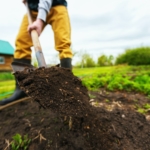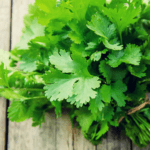8 Zero-Waste Tips for the Kitchen
Help us celebrate Zero Waste Week. Check out our tips and hints on ways to reduce your trash in the kitchen.

1. Dump the disposables. Switch from paper towels to cloth rags. Switch from plastic wrap to foil, metal, glass, or plastic containers. Switch from sandwich baggies to cloth sandwich-sized wrap sacks.
2. Cook from scratch. Rather than buying pre-packaged condiments, juices, breadcrumbs, salad dressings, baked goods, and other popular grocery store items, learn to make your own and save on packaging.
3. Visit the farmer’s market. Buy produce, eggs, milk, and other fresh goods from the farmer’s market. Farmer’s market vendors not only avoid excess packaging, they’ll happily take back what packaging they do use (egg cartons, berry crates, milk bottles, etc.) for reuse.
4. Buy in bulk. Buy dry goods in bulk.
5. Drink tap water. And keep it in a reusable water bottle. No need to wash a glass every time you want a glass of water. Use an at-home filtration system like Brita.
6. Compost! Nearly every kind of food waste, and many natural paper products, can be composted. Then, instead of clogging up a landfill, your food waste — egg shells, coffee grounds, fruit peels, etc. — can go back into nourishing the Earth. Keep a sizable compost bucket nearby whenever you cook so you aren’t tempted to throw those valuable nutrients in the trash.
7. Learn to love leftovers. Before cooking a new meal, make sure that any leftovers are used up. If there isn’t enough to go around, find a way to reinvent it.
8. Can it! Instead of buying canned vegetables from the store, grow all that you need when it’s in season and can it yourself. You’ll not only save resources — since those mason jars can be used year in and year out — you’ll also ensure that none of those delicious veggies spoil before you can eat them.

Jaime McLeod
Jaime McLeod is a longtime journalist who has written for a wide variety of newspapers, magazines, and websites, including MTV.com. She enjoys the outdoors, growing and eating organic food, and is interested in all aspects of natural wellness.












Many of the new plastic soda bottles are made of plastic thin enough to cut through with a knife. Cut through about 3 inches from the bottom. Poke holes in the bottom with an awl and plant seeds or seedlings. Use the top, with or without the cap on, to make a small greenhouse over plants just starting out.